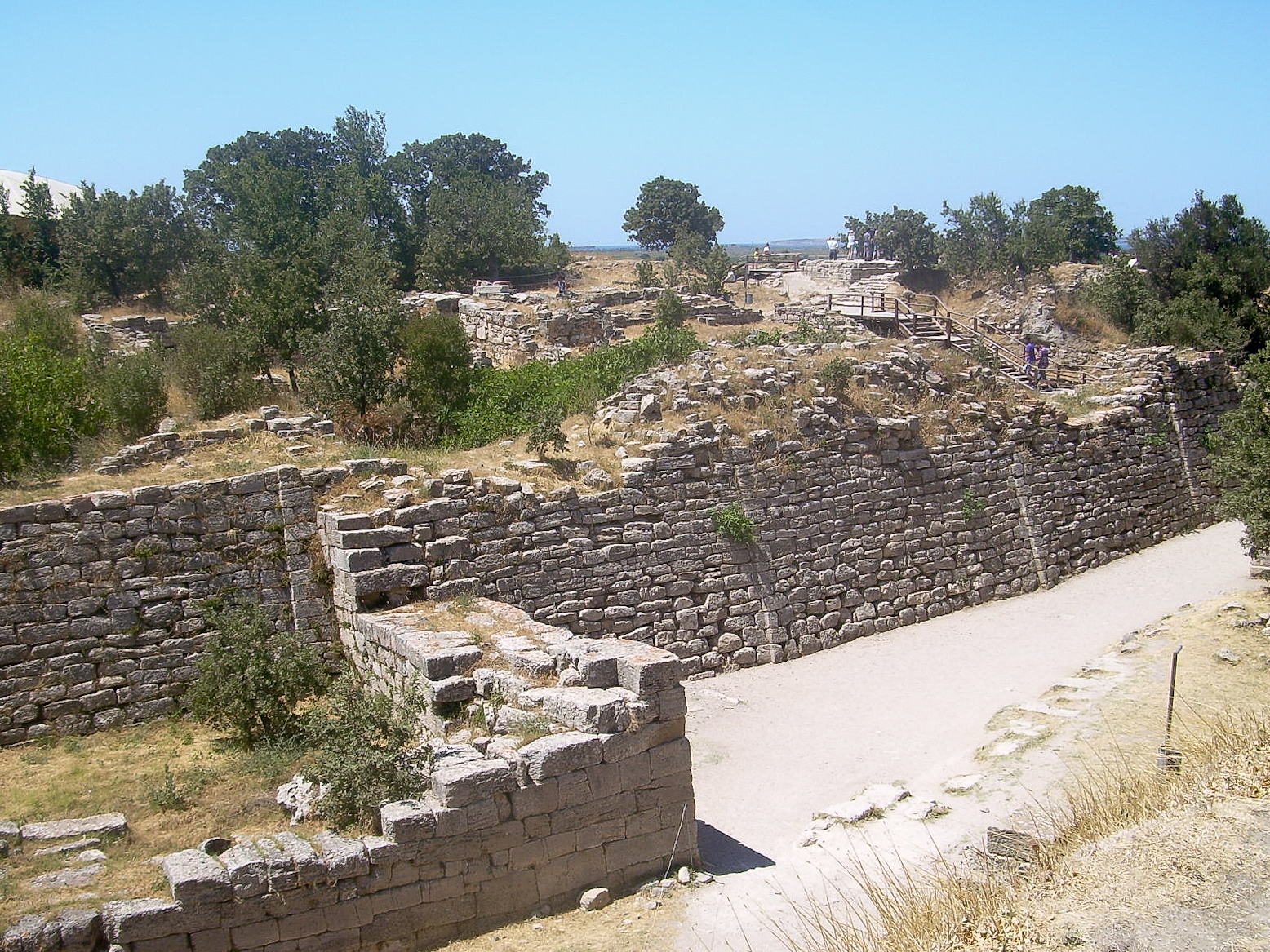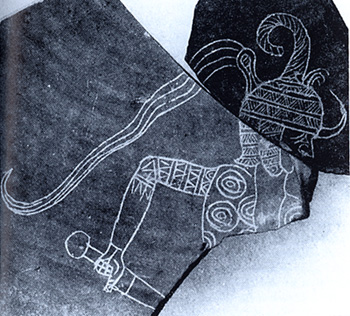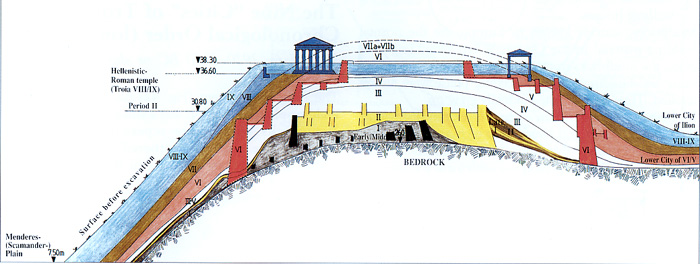In this episode, we briefly discuss the Trojan War myth; the historical evidence for Mykenaian conflict in the eastern Mediterranean and Anatolia (by looking at the Egyptian and Hittite records); the archaeological evidence for layer VI and VII on the citadel of Hisarlik, i.e. ancient Troy (Wilion/Ilion); the Bronze Age collapse in both Greece and the Near East and its possible causes/explanations; the mysterious group of people known as the "Sea Peoples"; and the so-called "Dorian Invasion" of Greece
ca. 1450 BC - Egyptian records mention a land belonging to the Danaya (Danaians?), during the reign of Pharoah Thutmose III
ca. 1430 BC - An anti-Hittite uprising in Assuwa (northwestern Anatolia), supported by the Ahhiyawans (Achaeans?), was put down by the Hittite king, Tudhaliya; mentioned as taking part were Wilusa and Taruisa (the city of Troy and its surrounding lands)
ca. 1400 BC - An Ahhiyawan warlord, named Attarsiya (Atreus?), attacked Hittite vassals in western Anatolia, including Madduwata (the prince of Arzawa), and the island of Alashiya (Cyprus), before being defeated by the Hittite king, Tudhaliya or Arnuwanda
ca. 1375 BC - The land belonging to the Danaya was geographically defined in an inscription on the Colossi of Memnon from the reign of Amenhotep III, in which a number of cities were mentioned and identified with certainty (including Mycenae and Thebes)
ca. 1360-1345 BC - the reign of the Hittite king, Tudhaliya II (son of Arnuwanda)
ca. 1345-1325 BC - the reign of the Hittite king, Suppiluliuma (youngest son of Tudhaliya II); led an overthrow and death of his younger brother, Tudhaliya III, upon their father's death
ca. 1325-1320 BC - the reign of the Hittite king, Arnuwanda II (eldest son of Suppiluliuma)
ca. 1320-1295 BC - the reign of the Hittite king, Mursili II (youngest son of Suppiluliuma)
ca. 1315 BC - Another anti-Hittite uprising, led by Arzawa and with the support of the Ahhiyawans, forced the Hittites to take military action in western Anatolia; at the same time, the Ahhiyawans seized lands in the eastern Aegean Sea
ca. 1345-1325 BC - the reign of the Hittite king, Suppiluliuma (youngest son of Tudhaliya II); led an overthrow and death of his younger brother, Tudhaliya III, upon their father's death
ca. 1325-1320 BC - the reign of the Hittite king, Arnuwanda II (eldest son of Suppiluliuma)
ca. 1320-1295 BC - the reign of the Hittite king, Mursili II (youngest son of Suppiluliuma)
ca. 1315 BC - Another anti-Hittite uprising, led by Arzawa and with the support of the Ahhiyawans, forced the Hittites to take military action in western Anatolia; at the same time, the Ahhiyawans seized lands in the eastern Aegean Sea
ca. 1300 BC - Troy VI is destroyed by an earthquake
ca. 1295 BC - Wilusa (Troy) in the region of Taruisa (the Troad) is attacked by a Hittite vassal king, named Piyama-Radu (Priam?), and so either the Hittite king, Mursili II or Muwatalli II, marched an army to northwestern Anatolia to put down the rebellion
ca. 1295-1272 BC - the reign of the Hittite king, Muwatalli II (eldest son of Mursili II)
1292-1290 BC - the reign of the Egyptian pharaoh, Rameses (founder of 19th Dynasty)
1290-1279 BC - the reign of the Egyptian pharaoh, Seti (son of Rameses)
1282 BC - traditional date of the foundation of Homeric Troy's walls
ca. 1295-1272 BC - the reign of the Hittite king, Muwatalli II (eldest son of Mursili II)
1292-1290 BC - the reign of the Egyptian pharaoh, Rameses (founder of 19th Dynasty)
1290-1279 BC - the reign of the Egyptian pharaoh, Seti (son of Rameses)
1282 BC - traditional date of the foundation of Homeric Troy's walls
ca. 1280 BC - Alaksandsus (Alexandros/Paris?), the king of Wilusa (Troy) signs a treaty with the Hittite king, Muwatalli II, pledging military support in any future campaigns
1279-1213 BC - the reign of the Egyptian pharaoh, Rameses II (son of Seti)
1279-1213 BC - the reign of the Egyptian pharaoh, Rameses II (son of Seti)
1274 BC - The Wilusans (Trojans) fought alongside Muwatalli II and the Hittites against Rameses II and the Egyptians in the Battle of Kadesh
1272-1267 BC - the reign of the Hittite king, Mursili III (son of Muwatalli II)
1267-1237 BC - the reign of the Hittite king, Hattusili III (youngest son of Mursili II)
1272-1267 BC - the reign of the Hittite king, Mursili III (son of Muwatalli II)
1267-1237 BC - the reign of the Hittite king, Hattusili III (youngest son of Mursili II)
ca. 1250 BC - Another anti-Hittite movement broke out (again by Piyama-Radu) but this time was supported by the king of Ahhiyawa, resulting in Wilusa being ravaged (Trojan War?); as a result, the Hittite king, Hattusili III, initiated correspondence with the unnamed king of Ahhiyawa in the so-called Letter of Tawagalawa (Etewoklewes/Eteocles?)
ca. 1250-1210 BC - The Milawata Letter was sent from the Hittite king, either Hattusili III or Tudhaliya IV, to an unknown vassal king in western Anatolia at Milawata (Millawanda/Miletus) demanding that he turn over a fugitive from Wilusa, named Walmu, to a Hittite envoy so that the Hittites can reinstall him as king at Wilusa, seeming to imply that Ahhiyawan raids may have led to Walmu being overthrown (Trojan War?)
ca. 1250-1190 BC - Troy VIIa was destroyed by fire
ca. 1250-1190 BC - Troy VIIa was destroyed by fire
ca. 1250 BC - various Greek cities repelled invaders from the north, but heavy damage was done, leading to an increase in defensive fortifications
1237-1209 BC - reign of Hittite king, Tudhaliya IV (son of Hattusili III)
1237-1209 BC - reign of Hittite king, Tudhaliya IV (son of Hattusili III)
1237 BC - the power of the Hittites began to wane under Tudhaliya IV, after they were defeated by the Assyrian king, Tikulti-Ninurta, in the Battle of Nihriya
1213-1203 BC - the reign of the Egyptian pharaoh, Merneptah (son of Ramesses II)
ca. 1210 BC - Suppiluliuma II, the son of the Hittite king, Tudhaliya IV, had to fight off an invasion fleet coming from the direction of Cyprus using Levantine ships, including a naval battle against Alashiya off the coast of Cyprus
1209-1207 BC - the reign of the Hittite king, Arnuwanda III (son of Tudhaliya IV)
1207-1178 BC - the reign of the last Hittite king, Suppiluliuma II (younger son of Tudhaliya IV)
ca. 1210 BC - Suppiluliuma II, the son of the Hittite king, Tudhaliya IV, had to fight off an invasion fleet coming from the direction of Cyprus using Levantine ships, including a naval battle against Alashiya off the coast of Cyprus
1209-1207 BC - the reign of the Hittite king, Arnuwanda III (son of Tudhaliya IV)
1207-1178 BC - the reign of the last Hittite king, Suppiluliuma II (younger son of Tudhaliya IV)
1207 BC - the Egyptian pharaoh, Merneptah, pushes out from the Nile Delta a mysterious group from the north, the so-called "Sea Peoples", as recorded on the "Merneptah Stele"
1205 BC - the Hittite capital of Hattusa was sacked and destroyed, probably by the proto-Phrygians (an Indo-European tribe from Thrace)
1203-1197 BC - the reign of the Egyptian pharaoh, Seti II (son of Merneptah)
ca. 1200 BC - Pylos was destroyed by fire (many Linear B tablets were thus baked and preserved); the site was abandoned and never resettled
1197-1191 BC - the reign of the Egyptian pharaoh, Siptah (son of either Merneptah or Seti II)
ca. 1200 BC - Pylos was destroyed by fire (many Linear B tablets were thus baked and preserved); the site was abandoned and never resettled
1197-1191 BC - the reign of the Egyptian pharaoh, Siptah (son of either Merneptah or Seti II)
1191-1189 BC - the reign of the Egyptian pharaoh, Twosret (a daughter of Merneptah); her reign ended in a civil war and the dissolution of the 19th Dynasty
ca. 1190-1180 BC - The fortresses of Mycenae and Tiryns were felled by an earthquake, both were able to recover but were severely weakened
ca. 1190-1180 BC - The fortresses of Mycenae and Tiryns were felled by an earthquake, both were able to recover but were severely weakened
ca. 1190 BC - Various cities in the Levant were sacked by the Sea Peoples, notably Ugarit; Byblos and Sidon survive and would form the backbone of the Iron Age Phoenicians
1189-1186 BC - the reign of the Egyptian pharaoh, Setnakhte (founder of 20th Dynasty)
1186-1155 BC - the reign of the Egyptian pharaoh, Rameses III (son of Setnakhte); is considered to be the last monarch of the New Kingdom to wield any substantial authority over Egypt, and his long reign saw the decline of Egyptian political and economic power, linked to a series of invasions and internal economic problems
1184 BC - traditional date for the Homeric sack of Troy
1189-1186 BC - the reign of the Egyptian pharaoh, Setnakhte (founder of 20th Dynasty)
1186-1155 BC - the reign of the Egyptian pharaoh, Rameses III (son of Setnakhte); is considered to be the last monarch of the New Kingdom to wield any substantial authority over Egypt, and his long reign saw the decline of Egyptian political and economic power, linked to a series of invasions and internal economic problems
1184 BC - traditional date for the Homeric sack of Troy
1181 BC - the Egyptian pharaoh, Rameses III, defeats the Sea Peoples on land in the Battle of Djahy in the southern Levant; almost all that we know about the battle comes from inscriptions on the mortuary temple of Ramesses III in Medinet Habu
1177 BC - Rameses III defeats the Sea Peoples for a second time this one at sea in the Battle of the Nile Delta, but in the process, Egyptian power was severely weakened
ca. 1150 BC - Mycenae was attacked for a second time from the north (the return of the Herakleidai?), but this time it did not recover and people migrated to the countryside
ca. 1150-1100 BC - Most sites in Greece declined into a group of small villages surrounding the citadel; famine and emigration set the backdrop for a massive population drop; the so-called Sea Peoples eventually settled down following a century of upheaval in the eastern Mediterranean, and their names and tentative identifications include the Peleset with the biblical Philistines who gave their name to Palestine, the Ekwesh with the Greek Achaioi, the Denyen with the Greek Danoi, the Lukka with those who gave their name to the southwest Anatolian region of Lycia, the Sherden with the Sardinians, the Shekelesh with the Sicilians, the Teresh with the Tyrrhenians (or the Etruscans), the Tjeker with the Greek Teucrians from Anatolia, and the Meshwesh with the Libyans
ca. 1150-1100 BC - Most sites in Greece declined into a group of small villages surrounding the citadel; famine and emigration set the backdrop for a massive population drop; the so-called Sea Peoples eventually settled down following a century of upheaval in the eastern Mediterranean, and their names and tentative identifications include the Peleset with the biblical Philistines who gave their name to Palestine, the Ekwesh with the Greek Achaioi, the Denyen with the Greek Danoi, the Lukka with those who gave their name to the southwest Anatolian region of Lycia, the Sherden with the Sardinians, the Shekelesh with the Sicilians, the Teresh with the Tyrrhenians (or the Etruscans), the Tjeker with the Greek Teucrians from Anatolia, and the Meshwesh with the Libyans
Late Bronze Age Geopolitical Situation in the Eastern Mediterranean


***Part of episode discusses chariot warfare among the Egyptians and Anatolians***
***Part of episode discusses the Hittites, Egyptians, and the Battle of Kadesh***
~~~~~~~~~~~~~~~~~~~~~~~~~~~~~~~~~~~~~~~~~~~~~~~~~~~~~~~~~~~~~~~~~~~~~~~~~~~~
The Trojan War (Myth and History)
***Discussion on the historical Mycenaean warriors vs depictions of Homeric heroes***

Podcast/Peerless (Part One) (Deep into History) - Trojan War myth (part one)
Podcast/Peerless (Part Two) (Deep into History) - Trojan War myth (part two)
Podcast/Hero (Part One) (Myth Dynamite) - Trojan War myth (part one)
Podcast/Hero (Part Two) (Myth Dynamite) - Trojan War myth (part two)
***Discussion on the grey area between myth and history of the Trojan War***



~~~~~~~~~~~~~~~~~~~~~~~~~~~~~~~~~~~~~~~~~~~~~~~~~~~~~~~~~~~~~~~~~~~~~~~~~~~~
Bronze Age Collapse
Map/Invasions and Migrations, ca. 1200 BC

Video/The Bronze Age Collapse - The Wheel and the Rod (Extra Credits)
Video/The Bronze Age Collapse - Fire and Sword (Extra Credits)
Video/The Bronze Age Collapse - Systems Collapse (Extra Credits)
***Episode focuses on the Sea Peoples***
***Episode focuses on the Bronze Age collapse from Greece to Egypt***
***Three episodes on the Bronze Age collapse in the Eastern Mediterranean***
***Two episodes on the Bronze Age collapse in the Eastern Mediterranean***






















No comments:
Post a Comment